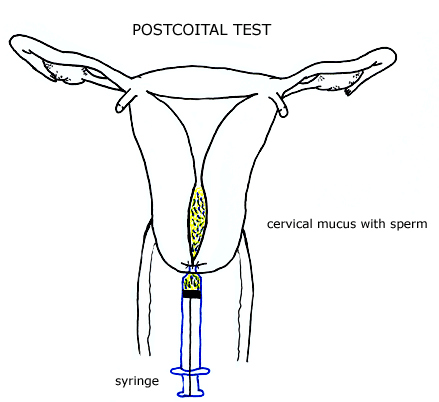|

The timing of the postcoital test within the menstrual cycle is important, since the ability of sperm to survive within cervical mucus is normally dependent (indirectly) on the circulating concentrations of ovarian hormones. Ideally, the postcoital test will be performed 1-2 days prior to ovulation.
The postcoital test should (ideally) not be performed within 4 hours of intercourse (relations, sex) since complement mediated immobilization of sperm takes about 4 hours to maximally develop. Sperm is thought to live in mucus for up to 2-3 days, so the postcoital test can be performed greater than 10 hours after intercourse.
A vaginal speculum is inserted and the cervix is centered. A syringe or catheter is usually placed into the cervix and (a sample of) mucus is withdrawn. This mucus is then immediately placed onto a slide, a coverslip applied, and the sample viewed under a microscope for identification of motile sperm.
The grading of the postcoital test is controversial. Most often, greater than 5 progressively motile sperm per high power field (400 X magnification) is considered normal.
This test is not particularly uncomfortable (generally similar in discomfort to a pap smear).
|

|